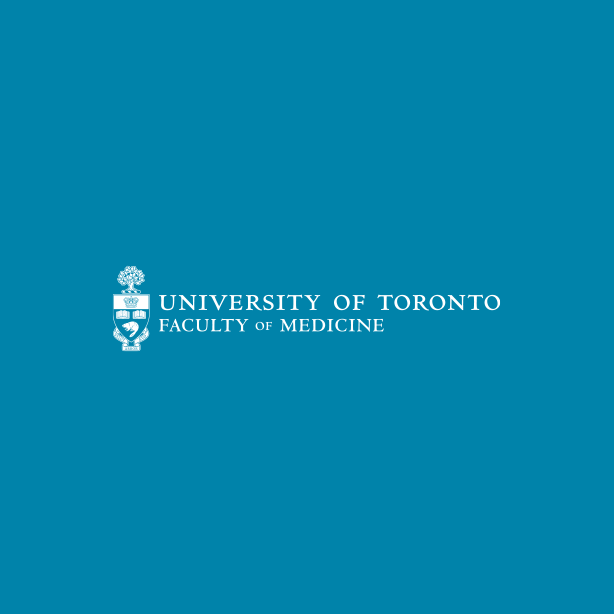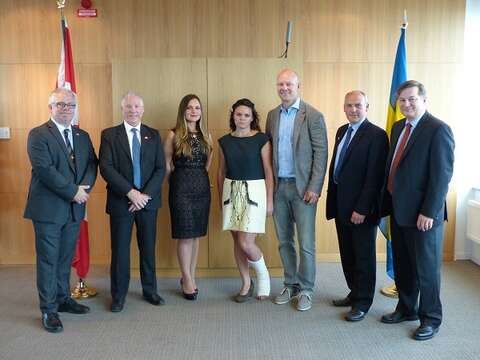Eighteen from U of T Named Fellows of the Canadian Academy of Health Sciences
Eighteen members of the University of Toronto community have been named fellows of the Canadian Academy of Health Sciences; one of Canada’s most esteemed academic academies.
The fellows are recognized for their leadership, creativity and commitment to advancing academic health science and are drawn from a wide range of health professions — recognizing work from basic science to population health.
“It is encouraging to see the accomplishments of so many members of our community recognized by the Canadian Academy of Health Sciences,” said Catharine Whiteside, Dean of the Faculty of Medicine. “Their leadership and dedication are deserving of this recognition and they are an inspiration to their fellow colleagues and students.”
Election to fellowship in the Academy is considered one of the highest honours in the Canadian health sciences community.
“I join my colleagues in celebrating the accomplishments of our newly elected fellows and congratulate them on their achievements,” said Howard Hu, Dean of the Dalla Lana Faculty of Public Health.
The newly elected fellows are:
- Philip Berger (Department of Family and Community Medicine)
- Dina Brooks (Department of Physical Therapy)
- Paul Dorian (Department of Medicine)
- Herbert Gaisano (Department of Medicine)
- Prabhat Jha (Dalla Lana Faculty of Public Health)
- Rita Kandel (Department of Laboratory Medicine and Pathobiology)
- Stephen Lye (Department of Obstetrics and Gynaecology, and Fraser Mustard Institute for Human Development)
- Muhammad Mamdani (Department of Health Policy, Management, and Evaluation & Leslie Dan Faculty of Pharmacy)
- Phillip Marsden (Department of Medicine)
- John Marshall (Department of Surgery)
- Avery Nathens (Department of Surgery)
- Patricia O'Campo (Dalla Lana Faculty of Public Health)
- Thomas Parker (Department of Medicine)
- Paula Rochon (Department of Medicine)
- Sean Rourke (Department of Psychiatry)
- J. Paul Santerre (Faculty of Dentistry & Institute of Biomaterials and Biomedical Engineering)
- Sharon Straus (Department of Medicine)
- James Wright (Department of Surgery)
The new fellows were inducted at a ceremony hosted by the Academy on September 19.

Optimize this page for search engines by customizing the Meta Title and Meta Description fields.
Use the Google Search Result Preview Tool to test different content ideas.

Select a Meta Image to tell a social media platform what image to use when sharing.
If blank, different social platforms like LinkedIn will randomly select an image on the page to appear on shared posts.
Posts with images generally perform better on social media so it is worth selecting an engaging image.
Liam Mitchell
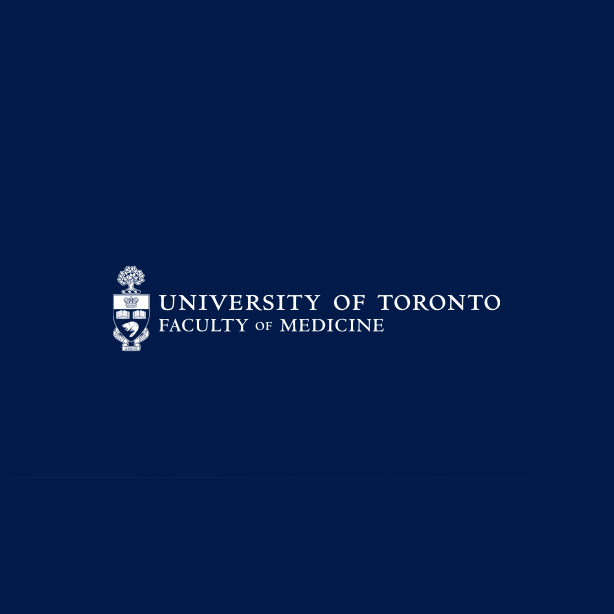
Letter from Vice Provost Students regarding laboratory activities in the following courses: PSL 372H from 2005 until 2011, and the Youth Summer Program (YSP) from 2008 until 2011.
Dear Student,
I am writing to you on behalf of the University of Toronto to provide you with some health information that may be relevant to you. The information pertains to some of the participants in the following courses: PHE 325Y and PHE 225S from 2006 until 2012, PSL 372H from 2005 until 2011, and the Youth Summer Program (YSP) from 2008 until 2011.
This issue applies only to those students who agreed to have their blood tested with a finger-stick device during the lab portion of these courses. If you did not volunteer to have your blood tested, this notice does not pertain to you.
During the laboratory portion of these courses, a finger-stick device was used by some students to take a drop of blood for determining blood type or testing for glucose or lactate levels. The lancet tip, the part of the device that punctures the finger, was replaced after each use but the finger-stick device itself was sometimes re-used during the same lab. Health Canada recommends that this type of finger-stick device should only be used by one person, even if the lancet tip is changed.
The Health Canada guidelines are based on concerns about possible transmission of Hepatitis B virus (Hep B) from re-use of these devices. These finger-stick devices have been used safely for many years in many settings. However, some reports show that, in clinics and long-term care settings where these devices are used very differently than during our labs, use of these devices on more than one person can lead to transmission of Hep B. We emphasize that there are no published reports whatsoever of transmission of Hep B with settings and patterns of uses such as the labs in which you participated. There has also never been any published association of Hepatitis C (Hep C) or HIV with the use of such a device on multiple individuals in any setting.
We have reviewed the circumstances of the use of these finger-stick devices at the U of T and consulted with Toronto Public Health. We have determined that your risk of being exposed to Hep B through use of the finger-stick device is exceedingly low. We know that these devices have been widely used in non-clinical settings. Departures from best practice have occurred, as already indicated by similar notices to students at Wilfred Laurier University and the University of Prince Edward Island. However, no reports whatsoever of Hep B have occurred outside of healthcare settings where the devices were used in a more intensive fashion on patients who received multiple tests over time.
Notwithstanding the very low risks, we feel strongly that the right way forward is to notify students who volunteered to have their blood taken using finger-stick devices during these labs. Our firm expectation is that any medical devices should be used only in exact accordance with guidelines, and we regret the fact that staff did not always meet those expectations. The University has since made it clear that only single-use, disposable lancet devices should be purchased and deployed for such tests.
Students who used the finger-stick devices, and received Hepatitis B vaccination prior to their participation in this lab, are likely protected against being infected with Hep B and no further action is recommended. Ontario began a school-based immunization program to prevent Hep B in 1994.
For students who have not been vaccinated against Hep B, the risk of being infected is slightly higher. We estimate that it could take many years of similar usage of the finger-stick devices across all universities in Canada for there to be one single occurrence of Hep B. It is therefore very unlikely that even one unvaccinated student would have been infected with Hep B by the tests you underwent. However, in this situation, you may wish to consult with your health care professional about whether to obtain a test for Hep B status.
If you are tested and found to be Hep B positive, there are multiple risk factors for this infection and you should discuss these with your healthcare professional. In Ontario, your healthcare professional will need to report your infection to the local health department who may contact you to investigate further.
If you are tested and confirmed to be Hep B negative, and if you have not previously been immunized, it may be prudent for you to ask your healthcare professional about proceeding with immunization.
I hope this summary is clear and helpful. If you have further questions, please do not hesitate to send an email to healthask@utoronto.ca.
Sincerely,
Professor Jill Matus
Vice Provost, Students & First-Entry Divisions
c. Toronto Public Health
c. Public Health Ontario

Optimize this page for search engines by customizing the Meta Title and Meta Description fields.
Use the Google Search Result Preview Tool to test different content ideas.

Select a Meta Image to tell a social media platform what image to use when sharing.
If blank, different social platforms like LinkedIn will randomly select an image on the page to appear on shared posts.
Posts with images generally perform better on social media so it is worth selecting an engaging image.
Is marijuana dangerous? Should it be legal?
A spate of politicians recently admitted to smoking marijuana, and the public, for the most part, shrugged its shoulders. With talk of decriminalization gaining momentum, we spoke to Dr. Bernard Le Foll about pot’s effect on the body and brain, and about the complex issues that surround the debate over legalization.
At U of T, Le Foll is a professor in the Departments of Family and Community Medicine, Pharmacology & Toxicology, Psychiatry and the Institute of Medical Sciences. At the Centre for Addition and Mental Health (CAMH), he is head of the Alcohol Research and Treatment Clinic and of the Translational Addiction Research Laboratory at the Campbell Family Mental Health Research Institute. His clinical activity is centered on alcohol and tobacco dependence. The goal of his research is to improve treatment of drug addiction. He has received scientific prizes and awards from the Canadian Institutes for Health Research, the National Institutes of Health - National Institute of Drug Abuse, the French Academy of Medicine, the American College for Neuropsychopharmacology, the College on Problems on Drug Dependence, the Society for Research on Nicotine and Tobacco, NARSAD, Pfizer, OPGRC, the Ontario Lung Association and the Heart and Stroke Foundation.
Marijuana use seems to be increasingly socially acceptable. Several politicians recently admitted that they have smoked pot. What’s your take on this?
Politicians are gradually catching up with the reality of use in society. It’s a drug that is widely used. It’s also a drug that is used for medical purposes. There has been pressure from the public to recognize those facts. But on the other hand, it’s a drug that has a clear addictive potential and has many negative effects.
The conventional wisdom is that marijuana is not addictive.
It’s clear that marijuana is addictive. The addictive potential is probably higher than most people believe. Five to seven per cent of users will develop dependence over time after repeated exposure, but more than a third of users will have difficulty controlling their use at some point in their lives. If you are chronically exposed to marijuana, when you attempt to stop, you can develop withdrawal symptoms, and you will have difficulty maintaining abstinence.
And I think it’s important to say that if you develop cannabis use disorder there is currently no pharmacological treatment to help you. This is different from alcohol, tobacco or opioid dependence, where we have medications to help. We are doing research at CAMH on the possibility of developing a substitution therapy for cannabis. Take the analogy of smoking: if you want to quit, you can take a nicotine replacement. If you’re a heroin user you can get a medication like methadone. We have the idea that the same approach can be used for cannabis, and we are evaluating the possibility of using Sativex, a buccal spray that contains THC and cannabidiol, which are the two main components of cannabis smoke. Sativex is currently on the market as a multiple sclerosis treatment.
Earlier you said marijuana has many negative effects. What are they?
Marijuana is almost always smoked. Therefore, users are exposed to the same type of health-related consequences as smoking tobacco, which might mean cardiovascular impact, respiratory impact and so on. There is also a probability of developing cancer due to exposure.
The difficulty is dissociating what is due to cannabis versus what is due to tobacco because those two substances are very often used simultaneously. But there is agreement by most physicians and experts in the field that it’s very likely that you’re exposed to at least the same health risk as tobacco.
But what is different from tobacco is that on top of those effects, with cannabis you have clear psychiatric effects. There is a very clear association with risk of developing schizophrenia and psychosis, and there are suggestions that it may also facilitate other psychiatric disorders such as depression and anxiety. Clear cognitive effects and decrease of general motivation are seen in daily users. There was also a study published a few months ago showing negative impact on IQ after exposure.
For this reason, allowing easy access to cannabis may result in increasing negative consequences. But that is true for all drugs of abuse. The more you open the door to their use, the more people will develop negative consequences. There is nothing specific to cannabis here.
Can we make a distinction between an occasional user versus a regular user in terms of these negative outcomes?
It is clear that vascular and respiratory effects are likely to occur even with limited exposure. For psychiatric consequences, we don’t know what the threshold is. This is all highly dependent on your genetic makeup. This means that it’s very likely that some people may develop, even with very low exposure, some psychiatric effects. Other people can take larger quantities and not develop negative consequences. Right now we cannot predict who will develop negative psychiatric consequences and who won’t.
This is why the debate is complex. Proponents of use say they have used for a long time and everything is fine. But this does not necessarily account for long term health effects that may occur years later. In addition, the absence of psychiatric effects may be true for one person, but another person could develop a psychiatric disorder after much less exposure.
So do I infer that you’re not personally in favour of legalization?
I believe we have to look at this in an objective manner. We currently have tobacco and alcohol on the market. Tobacco is killing 50 per cent of its users. Nine per cent of the Ontario population has alcohol use disorder, and another nine per cent uses alcohol in a risky manner—bingeing, for example. So right now you have between 15 and 20 per cent of the Ontario population having trouble controlling their alcohol use. There is an indication here that if you open the door widely to addictive drugs, there can be large-scale negative consequences. Also, we already have some form of legalization with the medical marijuana program, under which users can use cannabis for medical reasons. So there is already an experience in Canada of allowing use under specific circumstances.
On the other hand, we know that we will likely not get rid of cannabis in society by banning it. Keeping marijuana illegal creates specific negative effects: some people lose trust in the system of regulation because they believe it’s unfair that cannabis is illegal (as compared nicotine and alcohol, for example) and then they put themselves outside of the legal system to get it. This puts users in contact with dealers who may then offer other types of drugs. More importantly, lots of money goes into the trade of cannabis. Putting it into the illegal market provides billions of dollars per year into organized crime. Legalizing it could allow the government to control the situation, and it could have a positive financial impact. Another potential advantage of legalization would be to put users into contact with the support they need. A large majority of regular users have mental health problems, and a large number of those may benefit from connecting with the health care system.
So, taking all this into consideration, I believe we have to think of new systems to regulate access to cannabis. In my view, such a system should ultimately aim at reducing the negative impact of cannabis on individuals and society. We do have to be careful because legalization without proper regulation can lead to increased negative consequences.
Can you talk a little more about how medical use of marijuana works?
Our body relies on an internal cannabinoid system to function properly. Under normal circumstances, cannabinoid substances are synthetized in multiple organs in our body, such as the brain, and are involved in multiple functions such as brain and metabolic regulation. Cannabis or other drugs target this system by acting on receptors, which are like targets on our cells for those substances. By modulating those targets, marijuana is likely producing beneficial effects such as pain control in some people. Unfortunately, inhaling cannabis smoke is not a good way to deliver the cannabinoid drug to patients because they get exposed to the negative consequences of inhaling smoke.
But does it always have to be smoked?
Most users smoke, but some users take cannabis orally, or they use a vaporizer. Those are likely less harmful way of using it. It is important for every user to assess the balance between the benefit and the risk of their consumption. Discussion with a health care provider can be useful for that. There are also pharmaceutical alternatives coming—some companies are putting cannabinoid drugs into pills or spray. The advantage of this is that we will be able to assess the benefit and risk more clearly for these drug preparations. It is currently a very active area of research.

Optimize this page for search engines by customizing the Meta Title and Meta Description fields.
Use the Google Search Result Preview Tool to test different content ideas.

Select a Meta Image to tell a social media platform what image to use when sharing.
If blank, different social platforms like LinkedIn will randomly select an image on the page to appear on shared posts.
Posts with images generally perform better on social media so it is worth selecting an engaging image.
Jenny Hall
2013 Mats Sundin Fellow to Chart Genetic Blueprint of First 7 Days of Life
TORONTO, ON — Experts agree that a mother’s health and lifestyle during pregnancy can have a lasting impact on a child’s development. But just how crucial are those initial days after conception? This is just one of the many questions Mats Sundin Fellow Sophie Petropoulos is looking to answer.
Petropoulos is one of two postdoctoral fellows awarded the 2013 Mats Sundin Fellowship in Developmental Health, an elite exchange initiative between the University of Toronto’s Faculty of Medicine and the Karolinska Institute (KI) in Stockholm, Sweden. Jessica Weidner from KI will be conducting research at U of T. She will be looking at the effects of Toxoplasma gondii — also known as the cat litter parasite — on fetal development. The new Fellows were announced August 20th during a ceremony held at the Canadian Embassy in Stockholm.
Former Toronto Maple Leafs captain and National Hockey League superstar Mats Sundin worked with other donors to help start the fellowship, which provides advanced postdoctoral training in human development. One candidate from each university will complete up to two years of postdoctoral research at the other’s institution.
The program is managed by the Fraser Mustard Institute for Human Development, a first-of-its-kind research institute that explores how the first 2000 days of life impact future development and growth. Experts in health, social sciences and education work together to determine what factors lead to chronic and non-communicable conditions such as obesity, diabetes, learning disabilities and anxiety disorders.
“I’m most excited about learning from leading researchers in the field of human development, and working with new, cutting-edge single cell RNA sequencing technology. I’m confident this fellowship will take my research and the field to the next level,” said Petropoulos.
During her fellowship, Petropoulos will focus on determining the genetic blueprint during the first seven days of human development. This is a critical time because the embryo divides from a single cell into a group of cells which eventually become the fetus and placenta. Adverse environmental factors such as stress can have a major impact on the growth and development of both the fetus and placenta, potentially increasing the child’s susceptibility to diabetes, obesity and anxiety disorders later in life.
“This research will provide further insight into the mechanisms that regulate normal development, as well as shed light on how these genes are influenced by the environment. The answers we uncover will help us develop the tools and interventions needed to ensure optimal health as the child grows,” said Petropoulos.
“The research Sophie and Jessica conduct during their fellowships will help us better understand the origins of various psychological and physical conditions. The discoveries made both here at U of T and at Karolinska can fundamentally change our understanding of human development,” said Professor Stephen Matthews, Chair of the Department of Physiology and a member of the Fraser Mustard Institute for Human Development. Petropoulos is currently a postdoctoral fellow co-supervised by Matthews and Professor Moshe Szyf at McGill University.
(From left to right) Dr. Ola Hermanson (KI), Professor Stephen Lye (Executive Director of the IHD), Sophie Petropoulos, Jessica Weidner, Mats Sundin, Professor Stephen Matthews and Kenneth Macartney (Canadian Ambassador to Sweden).

Optimize this page for search engines by customizing the Meta Title and Meta Description fields.
Use the Google Search Result Preview Tool to test different content ideas.

Select a Meta Image to tell a social media platform what image to use when sharing.
If blank, different social platforms like LinkedIn will randomly select an image on the page to appear on shared posts.
Posts with images generally perform better on social media so it is worth selecting an engaging image.
Share Your Dreams, U of T
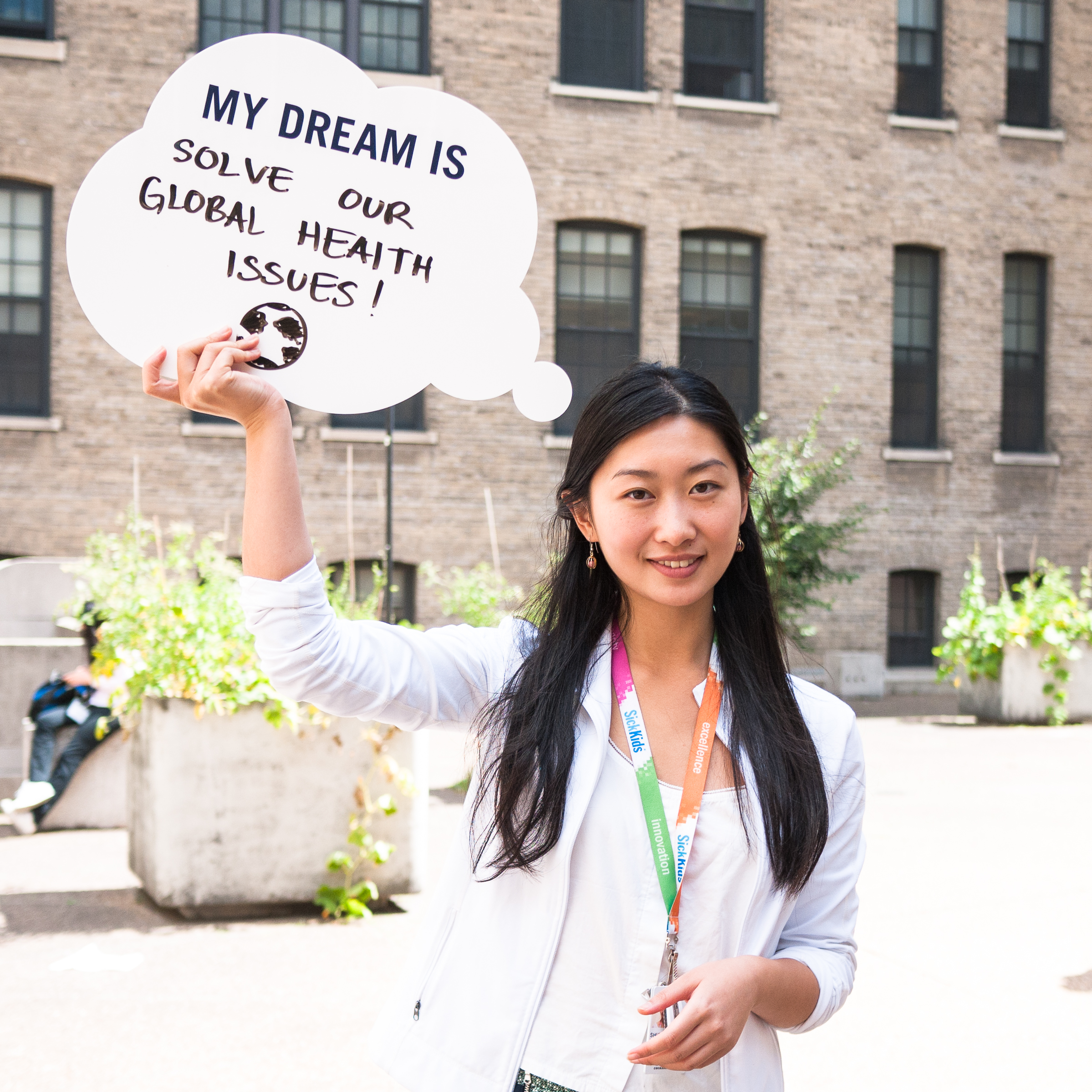 What’s your dream?
What’s your dream?
That’s the question being asked of the U of T community this week by a band of roving photographers.
With a whiteboard in hand, we will ask to have your dreams captured so they can be shared as part of an exhibit for the 2013 Scotiabank Nuit Blanche—Toronto’s annual night-long arts festival.
The exhibit—called My Virtual Dream—showcases the research of Randy McIntosh, a professor in the Institute of Medical Sciences and Department of Psychology, who is leading the development of a virtual brain. This research will power an artistic experience that crosses boundaries of art, science and technology by creating a novel way to communicate through images and music.
The exhibit is being presented by U of T’s Faculty of Medicine and Baycrest.
The photos will be used as part of the exhibit to show the variety of dreams—and dreamers— situated at U of T. The display will debut on October 5 at sundown and continue until the sun comes up the next morning.
Members of the U of T community are encouraged to attend one of the following photo shoots to share their dreams. The dates and locations are:
- Date: Tuesday, August 20th
Time: 1–2 p.m.
Location: Front Campus (in front of University College)
- Date: Tuesday, August 20th
Time: 2–3 p.m.
Location: Hart House (at the UTM Shuttle Bus Stop)
- Date: Wednesday, August 21st
Time: 2–3 p.m.
Location: Victoria College (in the Burwash Quad)
- Date: Thursday, August 22th
Time: 2–3 p.m.
Location: Robarts Library (in front of the main doors on St. George Street)
- Date: Friday, August 23th
Time: 2–3 p.m.
Location: Varsity Stadium (at the corner of Devonshire Place and Bloor Street)
To keep up-to-date on this exhibit, watch for messages from the Faculty of Medicine on their Facebook, Twitter and Instagram channels with the hashtag #UofTdream.

Optimize this page for search engines by customizing the Meta Title and Meta Description fields.
Use the Google Search Result Preview Tool to test different content ideas.

Select a Meta Image to tell a social media platform what image to use when sharing.
If blank, different social platforms like LinkedIn will randomly select an image on the page to appear on shared posts.
Posts with images generally perform better on social media so it is worth selecting an engaging image.
Nicole Bodnar

Celebrating Alumni Achievement
The achievements of three alumni from the Faculty of Medicine have been celebrated with the inaugural Dean’s Alumni Awards.
The program recognizes one graduate in three categories:
- Rising Star: which recognizes an alumnus/a who has graduated within the past 15 years and has made great contributions to the Faculty, their local healthcare community or academic achievement
- Alumni Volunteer: which recognizes an individual whose volunteerism has enhanced the Faculty of Medicine experience for students, staff, and fellow alumni
- Lifetime Achievement: which recognizes a graduate whose outstanding work has earned them national or international prominence.
“It is a pleasure to honour the achievements and success of our most distinguished alumni,” says Dean Catharine Whiteside, Dean of the Faculty of Medicine. “The strength of our Faculty can be seen through the fine work of our graduates, and this initiative allows us to showcase the ways they contribute to our well-established legacy of excellence.”
Nearly 50 alumni were nominated for consideration.
The inaugural winners are:
Rising Star Award – Dr. Samir Sinha
Dr. Samir Sinha completed his postgraduate MD training in Internal Medicine in our Faculty of Medicine in 2008. He is the Director of Geriatrics at Mount Sinai Hospital, and the University Health Network. Sinha has advised health authorities in Canada, Britain, the United States and China on innovative models of geriatric care. He is also the Expert Lead for Ontario’s Seniors Strategy.
Faculty of Medicine Alumni Volunteer Award – Dr. Don Cowan
Dr. Don Cowan received his M.D. from the Faculty of Medicine in 1956. Throughout his career as a hematologist-oncologist, he has served on more than 60 committees at the Faculty and its affiliated hospitals. Cowan has also participated in a variety of committees with nearly 20 provincial, national and international organizations, and remains active within the U of T Medical Alumni Association.
Lifetime Achievement Award – Dr. Henry Barnett
Dr. Henry Barnett received his M.D. from the Faculty of Medicine in 1944, before becoming a neurologist. His stroke research has included international clinical trials, which established the value of Aspirin in stroke prevention, and investigations that led to the denial of indications for carotid artery bypass surgery. He has also been a recipient of the prestigious Karolinska Stroke Award for Excellence in Stroke Research, as well as five Honourary Doctorates from Universities in North America and Europe.
Graduates with either a degree or certificate from the Faculty of Medicine were eligible for consideration, and could be nominated by any individual, either independently or on behalf of a group or institution.
The awards were presented at the Dean’s Honour Roll Luncheon on November 7th.

Optimize this page for search engines by customizing the Meta Title and Meta Description fields.
Use the Google Search Result Preview Tool to test different content ideas.

Select a Meta Image to tell a social media platform what image to use when sharing.
If blank, different social platforms like LinkedIn will randomly select an image on the page to appear on shared posts.
Posts with images generally perform better on social media so it is worth selecting an engaging image.
Erin Howe
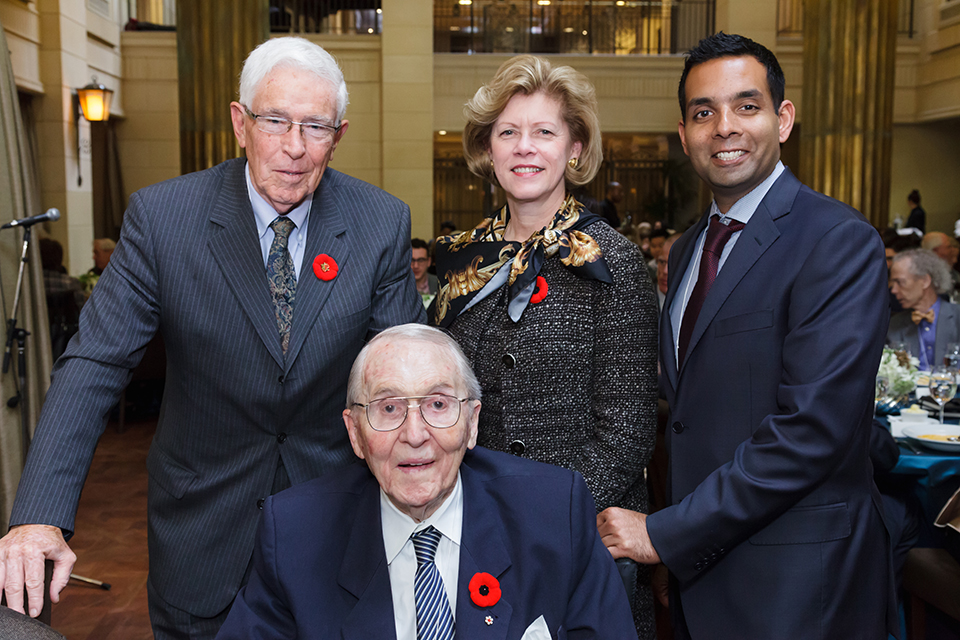
Remembering a Leader of Plastic Surgery
William R. N. Lindsay, a leader in the plastic surgeon community, passed away on November 3 at the age of 87.
A graduate of the University of Alberta in 1949, Lindsay pursued his post-graduate training in Toronto and the UK. He became the first Chief of the Division of Plastic Surgery at the Wellesley Hospital in 1966 and was also one of the pioneers in trans-gender surgery. With Drs. Leith Douglas and Ross Tilley, Lindsay established a regional burn centre at the Wellesley Hospital.
“Under Dr. Lindsay’s guidance, the Wellesley rotation was one of the best opportunities for surgical residents to access great pathology and fascinating cases,” said Christopher R. Forrest, Chair of the Division of Plastic and Reconstructive Surgery.
Lindsay was one of the founding members of MANUS Canada and under his direction developed the Wellesley Hospital Aesthetic Surgery Symposium. This event continues as the U of T Annual Aesthetic Plastic Surgery Symposium, where a lecture named in honor of Lindsay is delivered yearly. He also served as President of the Canadian Society of Plastic Surgery in 1972.
“Dr. Lindsay was held in very high esteem by the plastic surgery community. He helped train five generations of plastic surgeons at U of T over his career,” said Dimitri Anastakis, a Professor of Surgery and Vice Dean, Continuing Professional Development.
Lindsay is survived by his wife Norma Jean (MacLennan) and children Mary, Don, Norma, Margie, Janie, and Pattie and was the proud grandfather of Julia, Charlotte, and Sienna (Don), Dylan (Norma), Ryan and Adam (Margie), and Stephen (Pattie).
“Dr. Lindsay was the first plastic surgeon I met as a first-year medical student during an elective at the Wellesley. He made me feel incredibly important as he put me to work removing sutures on his post-op patients,” said Forrest. “On behalf of the Division of Plastic and Reconstructive Surgery, I would like to extend its deepest condolences and sympathies to Mrs. Lindsay and her family.”
Condolences and memories may be forwarded through www.humphreymiles.com

Optimize this page for search engines by customizing the Meta Title and Meta Description fields.
Use the Google Search Result Preview Tool to test different content ideas.

Select a Meta Image to tell a social media platform what image to use when sharing.
If blank, different social platforms like LinkedIn will randomly select an image on the page to appear on shared posts.
Posts with images generally perform better on social media so it is worth selecting an engaging image.
Liam Mitchell
Delivering Personalized Medicine for Cancer Patients
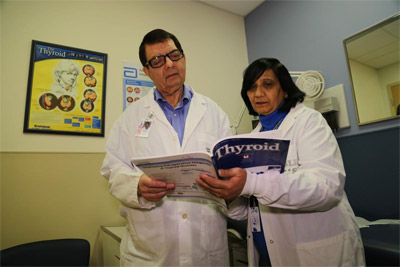
Not all cancers are the same. Some can develop quickly and are aggressive, while others can develop slowly and be easily managed. Being able to tell the difference is important in determining the care for each patient. But without a crystal ball, what can help doctors determine the best treatment options?
The answer lies in identifying reliable biomarkers, which can be measured to determine how aggressive a particular cancer might be. The result: more personalized medicine for cancer patients.
Genomics, which focuses on a cell’s DNA, has been a popular method for delivering on this promise. But two University of Toronto researchers — Paul Walfish of the Department of Medicine and Ranju Ralhan of the Department of Otolaryngology - Head and Neck Surgery — have focused their research on proteomics, which identifies specific cellular proteins.
“Proteins are really the workhorses of cells,” Ralhan explains. “If you focus your attention on their expression and function, you can quickly obtain an understanding of relevant biomarkers.”
Using this approach has led to identification of the S100A7 protein as a predictive biomarker for an oral lesion with dysplasia called a premalignant lesion. These types of lesions can lead to cancer. However, it’s difficult to predict which of these oral lesions will become cancerous and how rapidly. This remains a major clinical challenge and is important for identifying patients who would benefit from early intervention.
“We are extremely pleased to have identified a protein which can predict which oral dysplastic lesions will transform. This will be a great tool to find out which patients really need closer follow-up, and in time this will lead to better patient survival,” says Walfish, who is Director of the Mount Sinai Hospital’s Alex and Simona Shnaider Research Laboratory in Molecular Oncology.
“The overexpression of S100A7 can demonstrate the aggressiveness of the premalignant lesion, which can help doctors determine the best course of treatment,” explains Ralhan, who is the Co-Director of the Shnaider Laboratory and Canadian Institute of Health Research Chair in Advanced Cancer Diagnostics. She notes that treatment for advanced oral cancer can cause severe pain, disfigurement and poor quality of life in survivors. Being able to accurately predict whether treatment may be needed spares the patient unnecessary discomfort by avoiding overtreatment and providing greater cost savings.
Their findings were detailed in the international Journal of Cancer and have been independently verified by labs in both Toronto and New Delhi. The importance of these findings is underscored by the global rates of oral cancer. Oral cancer is one of the most common cancers in Asia —particularly in India and China — where smoking or chewing tobacco and betel quid are common. Incidents of oral cancer are also increasing in North America.
Working with an interdisciplinary team of researchers that includes pathologists, oncologists and surgeons, Walfish and Ralhan are continuing to explore how protein biomarkers can help diagnosis and prognosis of other epithelial cancers. For example, they have also used their approach to identify biomarkers for types of breast and thyroid cancer.
“Since there is a lot of interest in personalized medicine, biomarkers identified by proteomics offer a more feasible option,” says Walfish.

Optimize this page for search engines by customizing the Meta Title and Meta Description fields.
Use the Google Search Result Preview Tool to test different content ideas.

Select a Meta Image to tell a social media platform what image to use when sharing.
If blank, different social platforms like LinkedIn will randomly select an image on the page to appear on shared posts.
Posts with images generally perform better on social media so it is worth selecting an engaging image.
Liam Mitchell

Dreams of Sounder Sleep and Safer Anesthesia
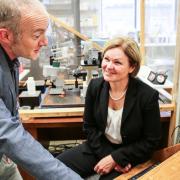 Life before anesthesia was horrific. Operations were incredibly painful. Many patients facing surgery suffered anxiety worse than the condition their surgery was supposed to fix.
Life before anesthesia was horrific. Operations were incredibly painful. Many patients facing surgery suffered anxiety worse than the condition their surgery was supposed to fix.
That’s probably why a 2007 British Medical Journal poll named anesthetics one of the top three medical advances since the 1840s, along with sanitation and antibiotics.
But how these potent — yet dangerous — agents of bliss actually work is a mystery. Indeed, the science of how we dull sensation hasn’t advanced much since anesthesia was invented.
“Anesthesia drugs today are just expensive cousins of ether,” says Dr. Beverley Orser, a Professor in the Departments of Anesthesia and Physiology at the University of Toronto who holds the Canada Research Chair in Anesthesia. “We need to move beyond ‘not killing as many people as we once did,’ to ‘drug discovery.’”
The need for a new era in anesthesia is pressing. Deaths related to anesthesia are down to about one patient per 13,000 in developed countries. But in low-income countries like Togo, without highly trained anesthesiologists and newer, safer technologies, the death rate is about one in 150.
Mounting evidence suggests that anesthetics are responsible for many post-surgery respiratory, memory and cognition problems. Some of these may be long-term or permanent or, in the case of breathing problems, even lethal.
To develop drugs with fewer of side effects and safety risks, Orser and other researchers have focused on individual elements of the anesthetized state. Their goal is specificity: loss of consciousness without impaired memory, for example, or immobility that doesn’t shut down breathing.
Orser’s lab has already identified and begun to manipulate a subtype of a neurotransmitter called GABA that plays a key role in memory disruption. More recently, Orser expanded her focus to an area historically outside anesthesia — sleep.
Orser and Richard Horner, a Professor in U of T’s Departments of Medicine and Physiology, have begun to study how anesthesia and sleep overlap at the molecular level.
“Anesthetics and painkillers are a black box,” says Horner, who is also the Canada Research Chair in Sleep and Respiratory Neurobiology. “But increasingly, it seems they tap into the same molecular circuits that put our brains to sleep.” Horner’s lab recently located the spot in the brain that opioids activate, critically depressing breathing in sleep and anesthesia. Now, they are mapping the molecular pathways at work in this important class of painkillers.
Horner’s research has also begun to explore the origins of obstructed breathing during sleep, which can be fatal if left untreated. Sleep apnea, a respiratory problem that affects about four per cent of the population, causes hypertension and doubles the chance of heart attack and stroke. It also leads to daytime drowsiness that lowers productivity at work and raises the risk of car accidents and other injuries.
Horner’s lab has identified a target for one of the first molecular therapies for sleep apnea. “The idea is to trick the cells that matter to keep the airway open, and this same thinking may keep patients breathing when they are asleep or anesthetized,” says Horner, who with Orser, hopes to soon launch a unique anesthesia and sleep science research program at U of T.
“How does anesthesia work, and what is the function of sleep?” says Orser. “As we probe both questions, answers in one area should provide insights to the other. Major advances come from looking at the sciences differently and bringing them together in novel programs.”

Optimize this page for search engines by customizing the Meta Title and Meta Description fields.
Use the Google Search Result Preview Tool to test different content ideas.

Select a Meta Image to tell a social media platform what image to use when sharing.
If blank, different social platforms like LinkedIn will randomly select an image on the page to appear on shared posts.
Posts with images generally perform better on social media so it is worth selecting an engaging image.
Jim Oldfield

Advisory Committee formed for the Appointment of the next Dean of Medicine
Cheryl Regehr, Vice-President and Provost of the University of Toronto, has announced the formation of the Advisory Committee for the Appointment of the next Dean of the Faculty of Medicine. The committee members are:
- Professor Cheryl Regehr, Vice-President and Provost (Chair)
- Mr. Larry Alford, Chief Librarian
- Professor Zubin Austin, Leslie Dan Faculty of Pharmacy
- Professor Dina Brooks, Department of Physical Therapy and Graduate Coordinator, Graduate Department of Rehabilitation Sciences
- Professor Brian Corman, Dean, School of Graduate Studies and Vice-Provost, Graduate Education
- Professor Patrick Gullane, Department of Otolaryngology – Head & Neck Surgery; University Health Network
- Mr. Justin Hall, Undergraduate Student
- Mr. Kevin Koo, Postgraduate Student
- Professor Stephen G. Matthews, Chair, Department of Physiology
- Professor Amy Mullin, Vice-Principal (Academic) and Dean, University of Toronto Mississauga
- Ms. Morag Paton, Education Scholarship Coordinator, Department of Family & Community Medicine
- Professor Janet Rossant, Department of Molecular Genetics; Chief of Research, SickKids Hospital; Chair, Toronto Academic Health Science Network Research Committee
- Professor Locke Rowe, Department of Ecology & Evolutionary Biology, Faculty of Arts & Science
- Professor Ross Upshur, Department of Family & Community Medicine; Dalla Lana School of Public Health; Bridgepoint Health
- Professor Catherine Zahn, President and CEO, CAMH; Division of Neurology, Department of Medicine
The Advisory Committee welcomes comments about the qualities sought in a Dean and nominations from interested persons by completing an online survey or via email to uoftMedicine@lavernesmith.com.
For additional information on the committee or the selection process is available on the Provost website.

Optimize this page for search engines by customizing the Meta Title and Meta Description fields.
Use the Google Search Result Preview Tool to test different content ideas.

Select a Meta Image to tell a social media platform what image to use when sharing.
If blank, different social platforms like LinkedIn will randomly select an image on the page to appear on shared posts.
Posts with images generally perform better on social media so it is worth selecting an engaging image.
Roberta Brown
